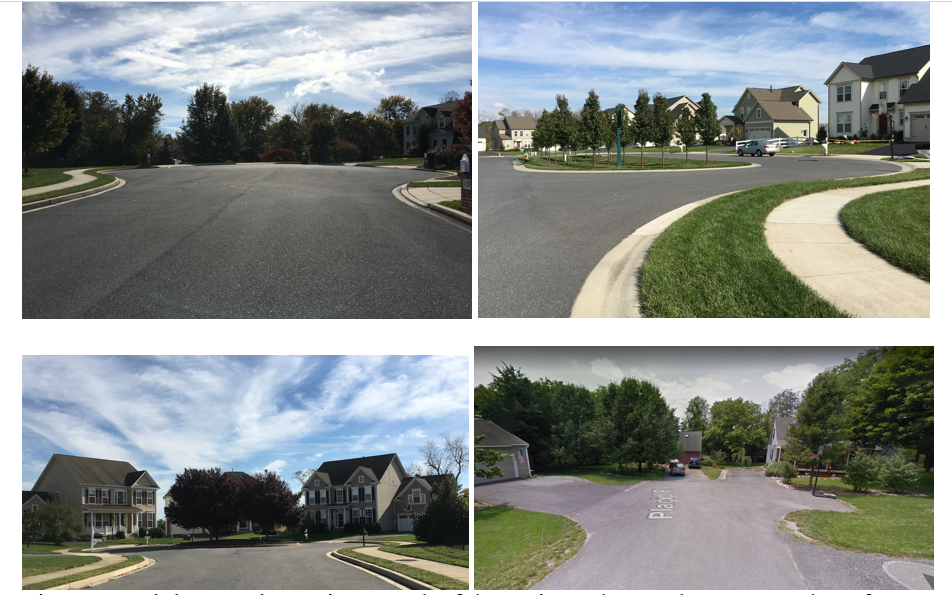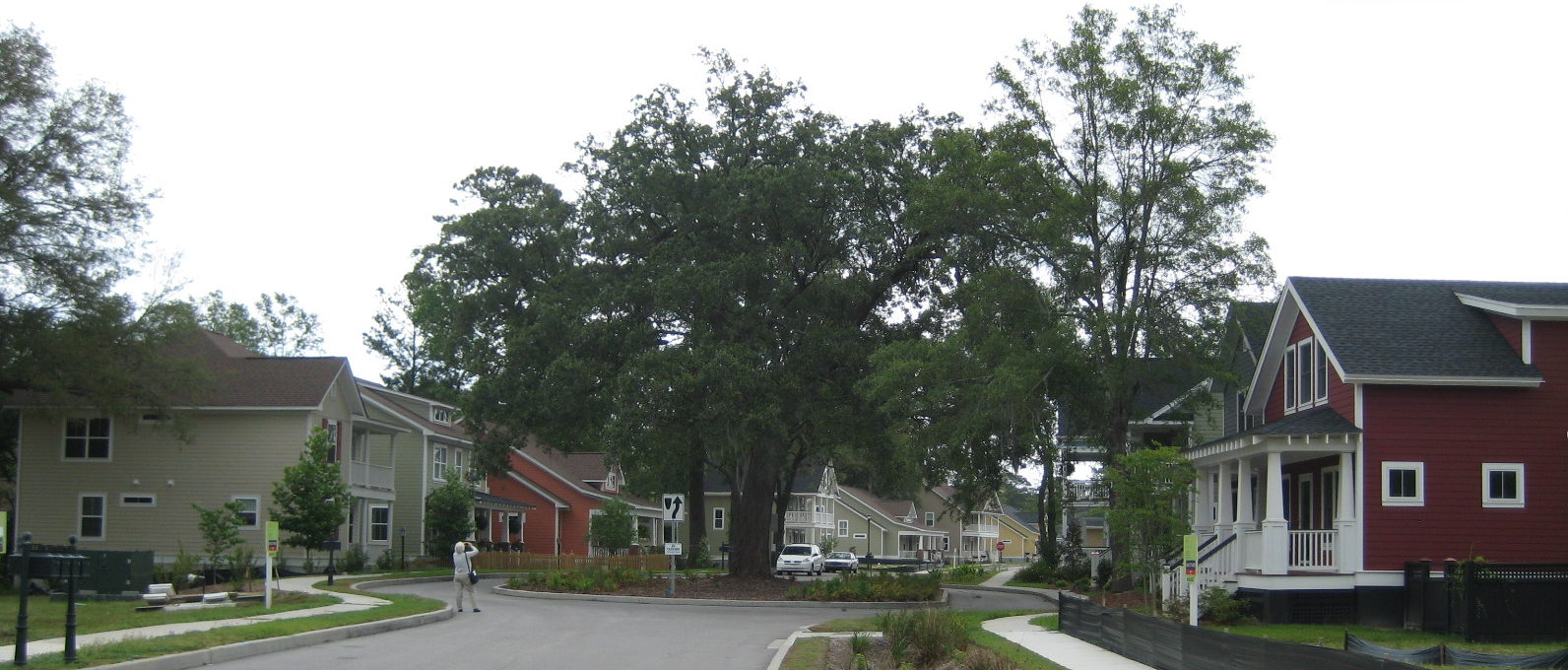Published in 1998, the Center for Watershed Protection’s Better Site Design Handbook outlines 22 model development principles for site design that act to reduce impervious cover, conserve open space, prevent stormwater pollution, and reduce the overall cost of development. The model development principles were created through a national Site Planning Roundtable, a consensus-based process initiated to create more environmentally sensitive, economically viable and locally appropriate development. The roundtable consisted of over 30 influential individuals from various organizations around the nation, including environmental groups, transportation officials, planners, realtors, homebuilders, land trusts, fire officials, county mangers and more.
The Better Site Design Handbook presented a process for evaluating local development regulations based on the model development principles so that strategic code changes could be made in the community. The tool provided to facilitate an in-depth review of codes and ordinances at the local level was the Code and Ordinance Worksheet (COW). Since its creation, the COW has been used by the Center to conduct 13 local site planning roundtables and review local development regulations in over 75 communities in nine states and the District of Columbia. Other organizations have used the Better Site Design process to make updates to their local codes or to conduct their own local site planning roundtables.
In 2017, the Center embarked on an update to the COW, with input from experts in relevant disciplines (e.g., stormwater, transportation, planning) across the nation. The goals of the update were to:
- Reflect the latest in stormwater management technology and regulations by incorporating questions about strategies for promoting infiltration and reducing runoff, a.k.a. Runoff Reduction, Green Infrastructure, or Low Impact Development
- Address different types of development beyond just new (suburban) residential subdivisions
- Incorporate updated standards and supporting research on Better Site Design practices
- Provide a user-friendly format for scoring
The revised COW and accompanying COW Scoring Spreadsheet are available for free download on the Center’s Online Watershed Library. A brief summary of the 2017 COW is provided below.
What is the COW used for?
The COW is intended to help communities evaluate their local development regulations to identify revisions that allow (or require) site developers to minimize impervious cover, conserve natural areas and use runoff reduction practices to manage stormwater runoff. Figure 1 provides an example of how specific Better Site Design practices reduce impervious cover at the site level. This illustrates the importance of having local codes that require or allow these practices, rather than prohibiting them or not addressing them at all.

Figure 1. Cul-de-Sac Alternatives. Each of the options shown above serve about four homes. Option 1 (upper left) is a cul-de-sac with a 50-foot radius that creates about 8,250 square feet of impervious cover. Option 2 (upper right) is a loop lane that reduces the need for backing up of vehicles and creates about 10% less impervious cover than Option 1. Option 3 (lower left) is a cul-de-sac that also has a 50-foot radius but incorporates a vegetated island. This alternative creates about 15% less impervious cover than Option 1. Option 4 (lower right; source: Google Earth) is a hammerhead or t-shaped turnaround that produces about 80% less impervious cover than Option 1. This alternative is good for very short (< 200 feet) streets.
Who should use the COW?
The COW can be completed by municipal staff or by non-governmental organizations who wish to improve the environmental footprint and character of development in their community. It can be used by communities who are experiencing or anticipating moderate to high pressure for new development (urban, suburban, or rural) or redevelopment.
Why use the COW?
Many communities across the country are now either required to use Runoff Reduction/Green Infrastructure/Low Impact Development practices or are voluntary pursuing their widespread implementation to comply with MS4 permits and TMDLs or reduce combined sewer overflows. Using the COW to review local codes and ordinances helps communities identify and remove barriers to these practices, increasing their ability to comply with water quality requirements. Some states (e.g., MD, CA, CT) even require code review as a condition of MS4 permits. These regulatory updates can also help to support local resiliency planning and sustainability planning efforts.
Developments that use Better Site Design techniques not only reduce more pollution and conserve more natural areas than conventional developments, they also can reduce construction costs for developers and increase profits, and result in safer streets, more open space for recreation, and more walkable neighborhoods.
How do I use the COW?
The steps to completing the COW are to:
- Gather codes, ordinances, and other documents
- Identify authorities who administer the rules
- Select the appropriate COW questions for your community
- Review the regulations to find answers to the COW questions
- Use the COW Scoring Spreadsheet to record answers, points, and notes
- Identify priority actions for the short and long term
The revised COW provides guidance for communities on prioritizing short and long-term actions for regulatory changes and also includes a Resources section to help with designing effective code and ordinance language. For more information, download the COW and the COW Scoring Spreadsheet.






